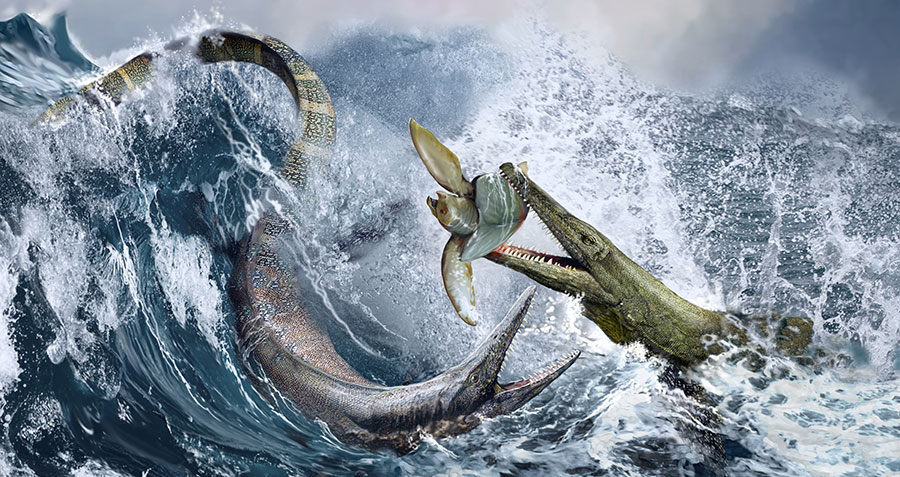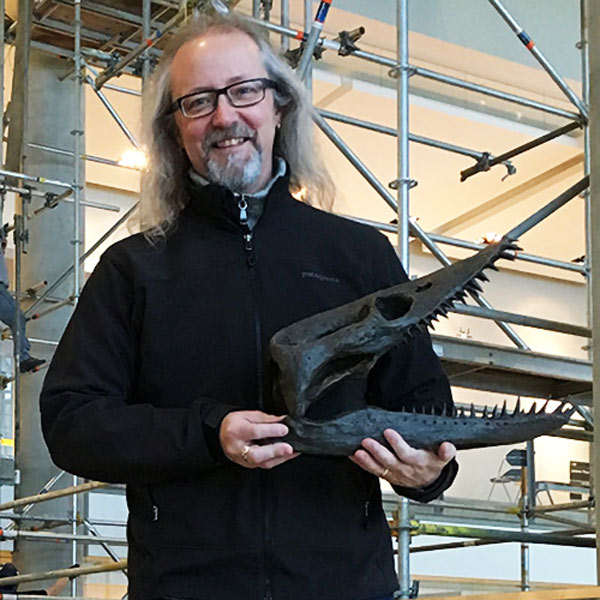
Paleontology: Ancient Marine Reptiles
Ancient Marine Reptiles examines the diversity, adaptations, convergence, and phylogenetic relationships of extinct marine reptiles and provinces a comprehensive overview of the evolutionary changes that occur when air-breathing terrestrial animals return to water.
Take online for free
Sign up for free on Coursera today or upgrade to get a certificate.
Take for credit
U of A students can sign up for PALEO 203 (1 credit) and access the course through eClass.
About the Course
Paleontology: Ancient Marine Reptiles is a four-lesson course teaching a comprehensive overview of the evolutionary changes that occur when air-breathing terrestrial animals return to water.
This course examines the diversity, adaptations, convergence, and phylogenetic relationships of extinct marine reptiles. Time Commitment: 3-5 hours per week
Students will explore three major groups of marine reptiles:
- ichthyosaurs,
- plesiosaurs, and
- mosasaurs.
Curriculum Alignment
Taking the course as an Alberta junior high or high school student? Paleontology: Ancient Marine Reptiles content aligns with parts of the Alberta curriculum for Science 7 and 20 and Bio 20. Learn how U of A MOOCs align with Alberta's secondary curricula.
Take the course for free & learn about ancient life under the sea
Instructor
Michael Caldwell, Professor and Chair
Department of Biological Sciences, University of Alberta
Michael Caldwell's research is in the area of vertebrate paleontology, i.e., morphology, phylogeny, evolution, and ecology, etc. Organisms of interest include fossil and living squamates (snakes and lizards) as well as of extinct marine reptiles such as ichthyosaurs and plesiosaurs.
Current research is focused on marine and terrestrial snakes from Cretaceous rocks in the southern hemisphere (Gondwana), the cranial anatomy and phylogeny of extant scolecophidian snakes (blind, burrowing snakes), fossil mosasauroids from Upper Cretaceous rocks in New Zealand, Europe, Africa and North America, terrestrial lizards from the Cretaceous rocks of North America, and the molecular genetics of axial elongation in limb-reduced to limbless tetrapods.
Syllabus
Module 1 - Introduction to Marine Reptiles
Explore the adaptations common to marine reptiles and examine the "aquatic problem."
Module 2 - Ichthyopterygians
Examine the characteristics and diversity of ichthyosaurs and their closest relatives.
Module 3 - Sauropterygians
Examine the characteristics and diversity of plesiosaurs and their closest relatives.
Module 4 - Mosasauroids
Examine the characteristics and diversity of mosasaurs and their closest relatives.
